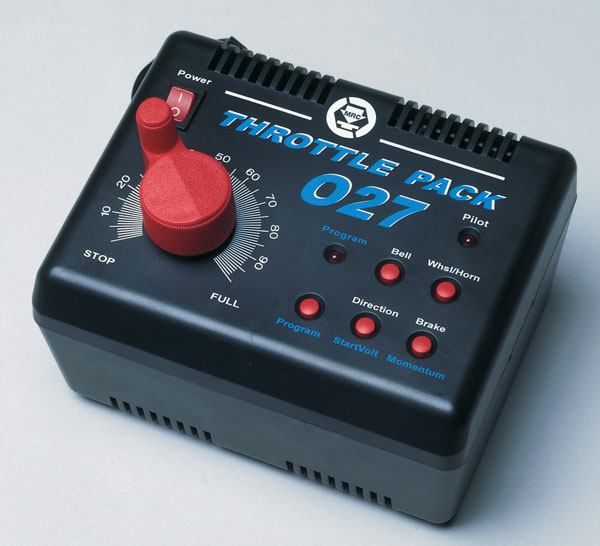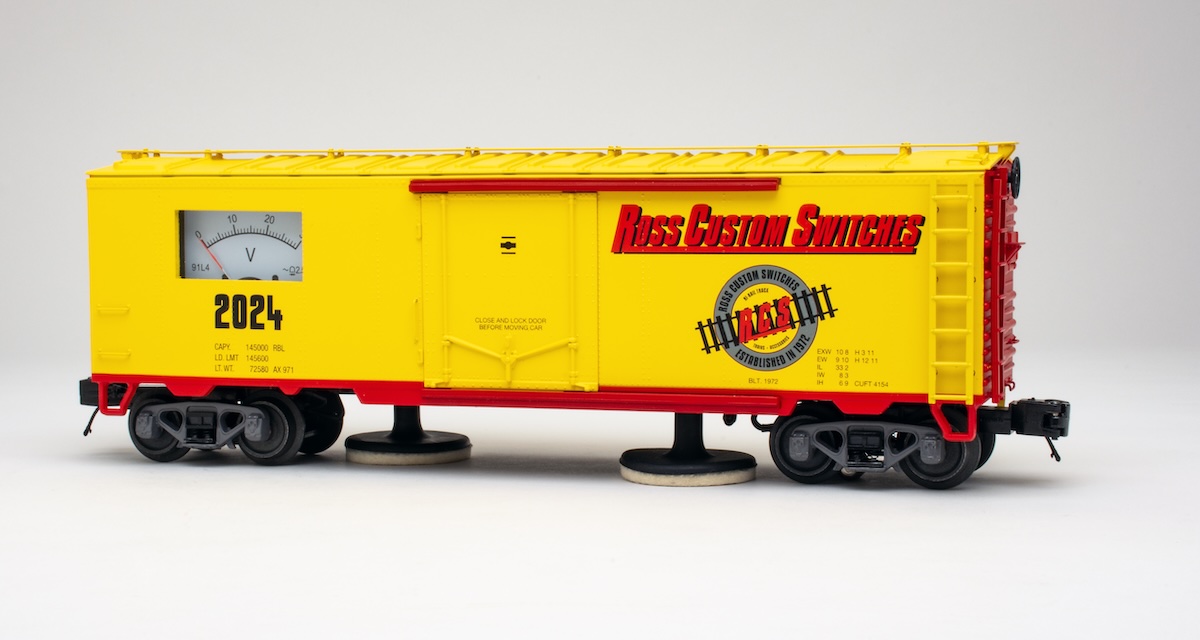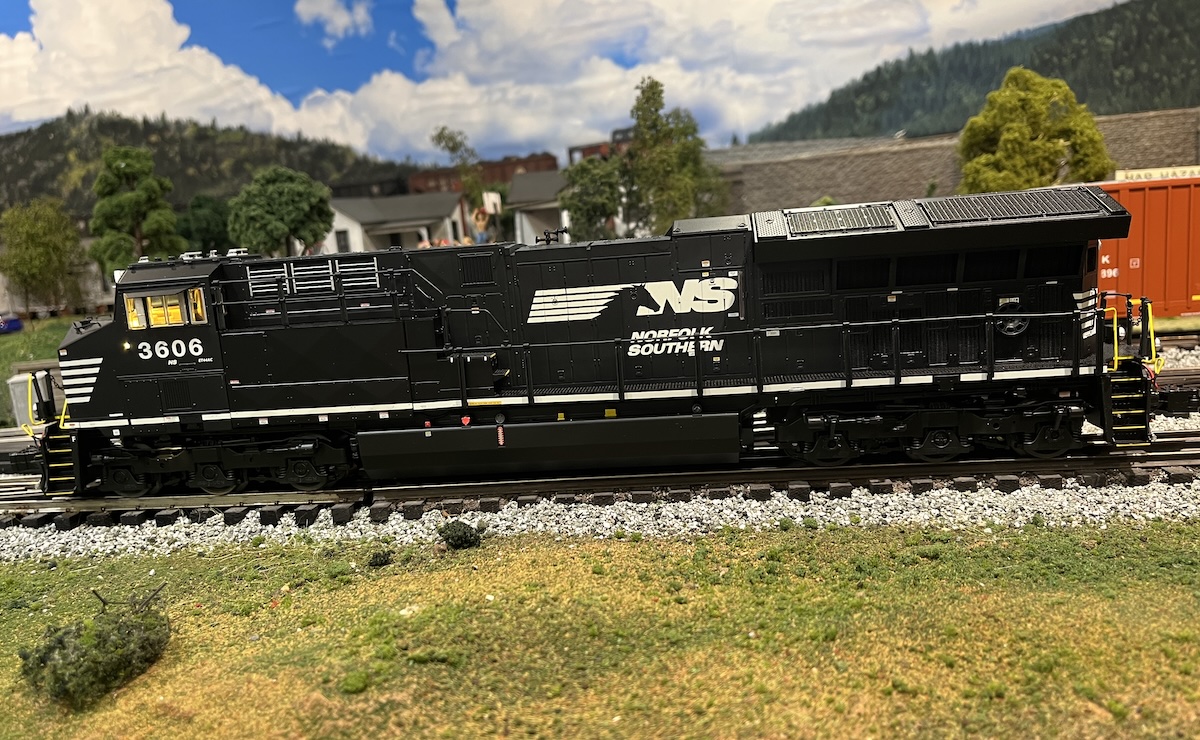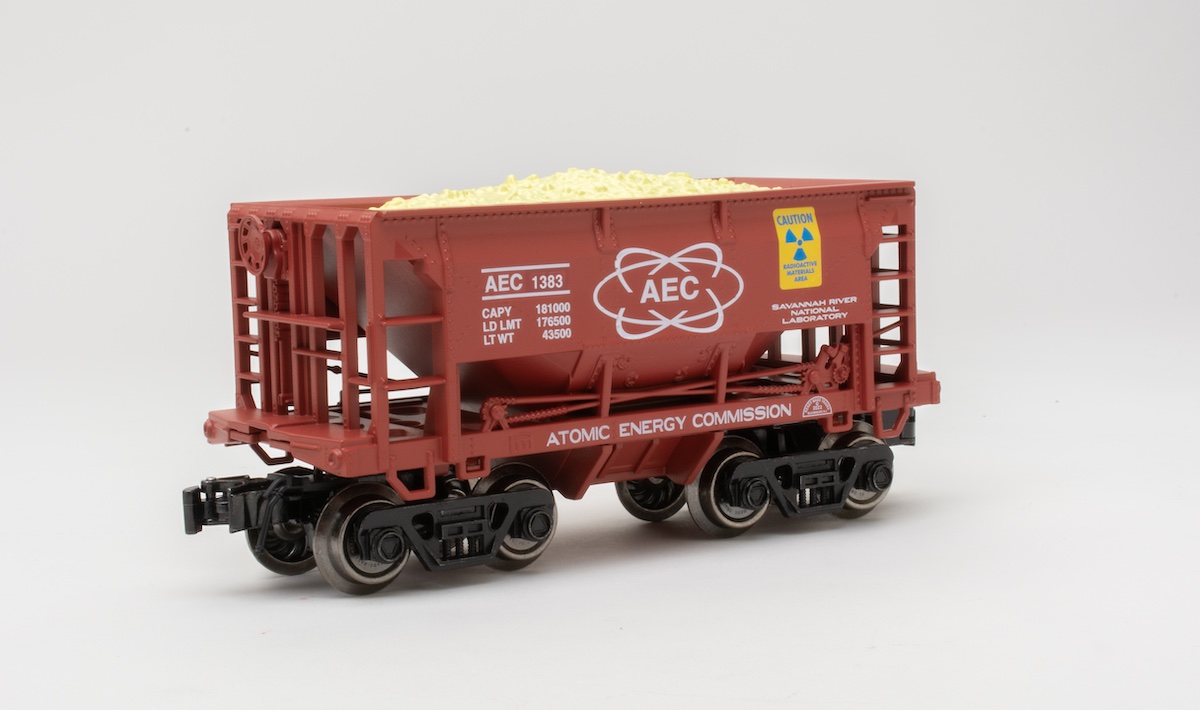But what about the operator who needs more power than a starter set transformer can supply, but doesn’t need to operate three layouts and a coffee pot simultaneously?
Enter Model Rectifier Corp. Two years ago the firm re-christened its O gauge line with a re-working of its DualPower O-27 transformer – offering 270 watts and up to two walk-around controllers. In 1999 the firm is taking a different approach, stepping down in power by offering the 100-watt Throttle Pack O27.
Is less more? Perhaps.
The Throttle Pack O27 targets the operator running a smaller layout – 4×8 or slightly larger – who needs a usable chunk of power to run one line but no accessories. A strange combination you say?
Not at all. Many operators run accessories from secondary transformers, often starter set power supplies that don’t pack enough punch for longer trains. This arrangement gives the street lamps, signals, and illuminated structures their own power supply without siphoning electricity from the main line. There are also plenty of operators who don’t use operating accessories on their layouts. The Throttle Pack is designed for them.
The transformer itself is a stout black box measuring 51/4-inches deep, 7-inches wide, and 51/2-inches to the top of the control handle. The control panel features a throttle knob with graduated markings from stop to full power. It also has bell, whistle/horn, direction and brake buttons. There are two programming features labeled StartVolt and Momentum. A pilot light indicates if power is on or if the transformer is in the program mode. There is also a large non-illuminated on/off switch. On the back are the track power screws and a telephone-style jack for using a walkaround throttle (sold separately). There are no additional terminals that offer constant voltage AC power for accessories.
The transformer offers the True Braking system. Once you have programmed a start voltage and a train is under way, press this button and the train will brake. Release it and the train will return to its original speed.
The instructions cite a “sounds” button to activate locomotive sound system features. Since there isn’t a sounds button, this translates into “use the bell or whistle” button.
Short circuits are indicated by a blinking Program LED.
You can program momentum (to simulate the delay in starting or stopping a heavy train) for up to 25 seconds. However, the transformer does not “remember” the information after it is turned off at the end of an operating session.
We tested the ThrottlePack on a layout with mixed Lionel tubular track and Atlas O track. We tested more than a dozen locomotives from various manufacturers pulling a 20-car freight train comprised of both postwar and modern freight cars (with three illuminated cars in the consist) over a main line of approximately 70 feet.
Absolute compatibility between different makes of toy trains and transformers in this age of electronic sophistication is no longer a given. Accordingly, we set out to perform compatibility checks of the MRC Throttle Pack with a variety of locomotives.
The engines we lined up to test with the transformer included: Williams F-units, RF16s and an E60; the MTH Premier line Daylight 4-8-4, SD60, and SD90MAC, all with ProtoSound; an MTH RailKing 2-8-4 Berkshire, 4-8-4 Northern, and 2-6-0 Mogul with a mix of ProtoSound and whistle-only features; Lionel C30-7, SD50, and Dash 9 diesels with Railsounds, GP7s, with and without Railsounds, and a horn-only RS3; a K-Line FA diesel duo, an Atlas O switcher, and a Weaver U25B with a QSI sound system.
With two exceptions, all locomotives performed properly and all sound systems, all horns, and all bells worked.
The two exceptions were the MTH Premier Line SD60 with an early version of ProtoSound and a new Weaver U25B with QSI sound. The MTH engine’s sound system functioned but the locomotive would not move. On the other hand, the Weaver engine’s sound system, engine speed, and direction control demonstrated erratic performance. We double-checked the performance of these two engines with a Lionel LW, an MTH Z-4000, and the MRC DualPower O-27. The locomotives functioned properly with the LW and Z-4000 but duplicated poor performance with the DualPower.
Reasoning that this power supply isn’t intended for the operator who needs a ZW, Z-4000, or The Max, we didn’t attempt to find how many locomotives we could put on the track before tripping the circuit breaker. Instead, we ran our 20-car test train with a pair of two-motored locomotives and two illuminated dummy units at 10 volts, drawing more than 5 amps, for a 45-minute period. There was no deterioration in the performance of the Throttle Pack, and although it did become warm to the touch, it did not become alarmingly hot.
The MRC Throttle Pack may not appeal to everyone. If you have a layout that needs more juice than a starter set transformer but you don’t need the bulk of a 300- or 400-watt source, go to your local dealer and test drive the Throttle Pack.















It does unusual things on its own periodically. It needs an electronics bypass switch to lockout the program circuitry so you can use it reliably with out unpredictability. I run most of the K line locos. They all run great on the postwar Lionel transformers if you add the separately sold bell button. I am buying the new 64 watt Throttlepack for its simplicty. I hope I can replace the 64 watt transformer with the 100 watt transformer I will wire off of the 100 watt throttlepack. Let me know Bob if the transformers are compatible or interchangeable.